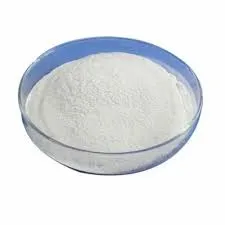
Dec . 21, 2024 09:33 Back to list
mortar bonding additive
Understanding Mortar Bonding Additives Enhancing Adhesion and Durability
Mortar is a fundamental building material used in construction and masonry, renowned for its capacity to bind bricks, stones, and other elements together. However, to maximize the performance of mortar, especially in challenging environments, the use of bonding additives has become increasingly popular among builders and contractors. This article delves into the significance of mortar bonding additives, their types, benefits, and application techniques.
What Are Mortar Bonding Additives?
Mortar bonding additives are supplementary materials mixed with standard mortar to enhance its properties, particularly adhesion, flexibility, and durability. These additives can be chemical compounds or natural substances specifically formulated to improve the interaction between the mortar and the surfaces it adheres to, whether they be porous materials like brick or less absorbent surfaces like concrete.
Types of Mortar Bonding Additives
There are several categories of bonding additives, each designed to address specific needs
1. Polymer-based Additives These are among the most widely used additives. They often come in liquid form and are blended with the mortar mix. Polymer additives improve the mortar’s elasticity and tensile strength, reducing the likelihood of cracking.
2. Latex Additives Similar to polymers, latex additives can significantly enhance the bonding capabilities of mortar. They offer improved water resistance and flexibility, which are especially beneficial in areas exposed to moisture.
3. Acrylic-based Additives Acrylics fortify the mortar's adherence and provide additional resistance against elements such as water, heat, and freeze-thaw cycles. They are commonly used in exterior applications and areas subject to harsh weather.
4. Hydraulic Additives These additives allow mortar to set and cure under water or in rainy conditions. They are crucial in underwater construction or in regions with unpredictable weather.
5. Natural Additives Some builders prefer to use natural substances, such as certain clays or fibers. These can improve the bonding properties of mortar while being environmentally friendly.
Benefits of Using Mortar Bonding Additives
The inclusion of bonding additives in mortar has numerous advantages
mortar bonding additive

1. Enhanced Adhesion One of the primary benefits is the enhancement of the bonding strength between different materials, which is essential for structural integrity.
3. Reduced Permeability Many bonding additives decrease the porosity of mortar, preventing moisture ingress and mitigating the risks of frost damage and mold growth.
4. Extended Workability Additives often improve the workability of mortar, allowing for longer setting times and easier application, which is particularly beneficial in hot or windy conditions.
5. Increased Durability Mortars that incorporate additives typically exhibit greater resistance to environmental factors, leading to an extended service life of masonry structures.
Application Techniques
To ensure that the benefits of bonding additives are realized, proper application is essential
1. Mixing Ratios It is crucial to follow manufacturer recommendations on the mixing ratios of mortar and additives. Too much or too little can compromise the desired effects.
2. Surface Preparation Surfaces to which the mortar will be applied should be clean, free of dust, and ideally slightly moist to facilitate better adhesion.
3. Curing Once applied, the mortar should be adequately cured to achieve maximum strength and durability. This may involve keeping the surface damp for a specific period, depending on the type of additive used.
Conclusion
Mortar bonding additives play a vital role in modern construction, providing essential enhancements that contribute to the safety, durability, and longevity of masonry structures. As the construction industry continues to evolve, incorporating these additives is not merely beneficial but often necessary to meet the performance demands of contemporary building projects. Whether for residential buildings or commercial structures, the thoughtful application of mortar bonding additives can ensure that the integrity of the materials remains intact over time.
-
Versatile Hpmc Uses in Different Industries
NewsJun.19,2025
-
Redispersible Powder's Role in Enhancing Durability of Construction Products
NewsJun.19,2025
-
Hydroxyethyl Cellulose Applications Driving Green Industrial Processes
NewsJun.19,2025
-
Exploring Different Redispersible Polymer Powder
NewsJun.19,2025
-
Choosing the Right Mortar Bonding Agent
NewsJun.19,2025
-
Applications and Significance of China Hpmc in Modern Industries
NewsJun.19,2025







